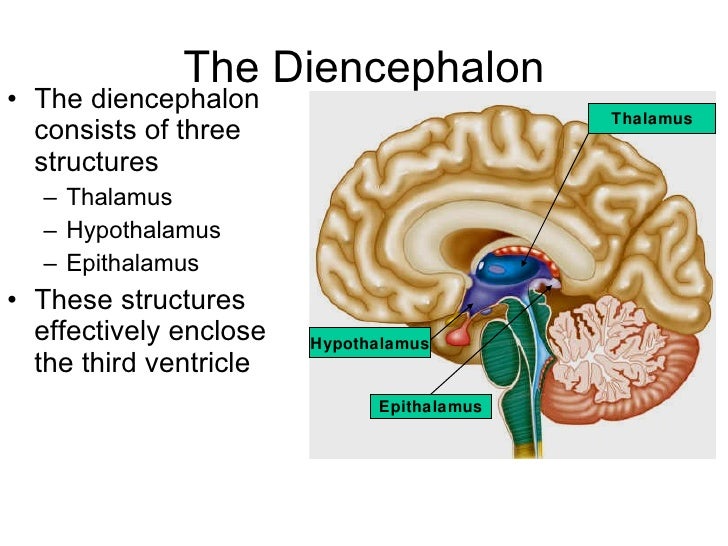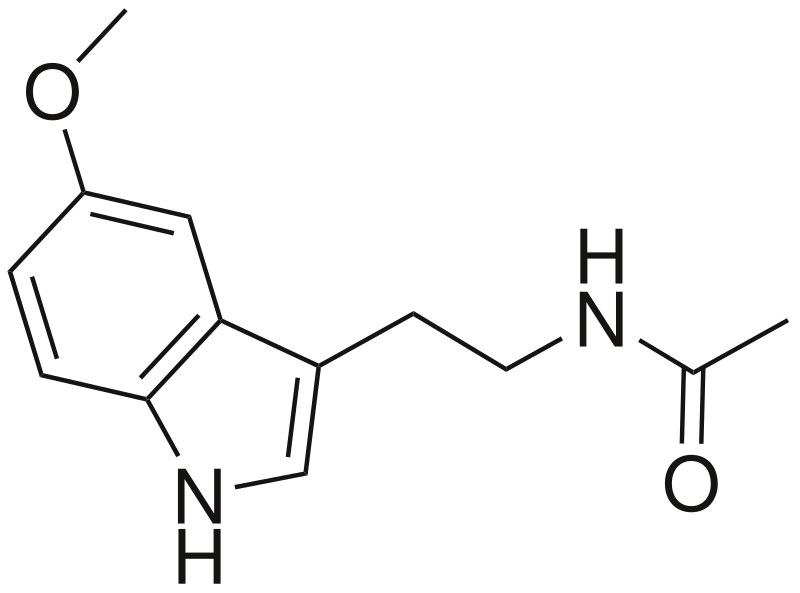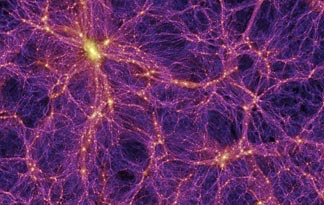An Introduction
In this entry we will discuss our body's electromagnetic field and how it can be disturbed by external interactions and even photographed using Kirlain photography. I will also discuss the idea of an aura, its manifestation and people's apparent ability to register these auras with the human eye. This will be the final entry in the series. If you have heard or read them all i hope you have gained something from them, and I hope you will go into the world with an open mind.
The Human nervous system
Our nervous system contains two types of cells, the neurons and the glial cells. Neurons allow the transmission of electrical and chemical signals to various parts of the body and glial cells maintain homeostasis (so basically they act like glue). So what does this have to do with the bioelectric field? Well when electricity is passed through a conductive wire it creates a magnetic field. Similarly, when the neuron passes an electrical signal to another cell it also creates a magnetic field. Our brains contain approximately 100 billion neurons, all generating magnetic fields as they pass electrical signals through the body. Take a multimeter and place it across any two points on the body; you will read an electric potential, this means there is the potential for energy to move across the surface of the skin. I'm not saying these interactions or the electric potential of the skin is proof of auras but there is certainly evidence of a net effect of these electrical interactions on the exterior of the body that I feel merits further investigation.
Kirlian photography
This leads me to my next topic which is that of Kirlain photography. Semyon Kirlain was a Russian inventor and researcher who stumbled on a set of techniques now known as Kirlain photography. In one such technique he found that by placing an object on a photographic plate with a high frequency electric potential he could create images of the objects on the plates from their inherent coronal discharges. For many years people believed Kirlain had the ability to observe the human aura and even photograph the human soul, however in his remarkably long life of 80 years Kirlain never produced suitable evidence to support such claims.
The aura
An aura is defined as a radiant glow emanating from all living things. It is believed in some circles that certain individuals have the ability to see auras with the human eye. Many would dismiss this as pure nonsense but there is some evidence supporting such claims. In my first entry we spoke about the photo-receptor cells of the eye. These cells are divided into two categories: The rods, which control night vision and peripheral vision and the cones which control colour. We are all born with 3 types of cones, one for red, one for blue and one for green which represent the primary colours of the light spectrum. (Yellow is not a primary colour in science because it can be made up of green and red light). However, some people are born with a forth type of cone. These cones are capable of registering a large portion of the ultraviolet spectrum with the brain assigning a colour to each new shade of Ultraviolet. So one explanation for these so called auras could be that some individuals simply have the tools of reason required to comprehend what lies outside the realm of comprehension for a normal person. This mutation is called Tetrachromacy and has been well documented among the scientific community. Below is a picture of the wavelengths of light which are absorbed by the cones of an eye with the mutation.

Absorbance vs wavelength for an eye with Tetrachromacy
Conclusion
To quote William Butler Yeats "The world is full of magic things, waiting patiently for our senses to grow sharper" I hope you enjoyed these pieces and I hope you have taken something away from them. The world truly is a wondrous place and a denizen would do well to remember that reality is subject to interpretation and the prevailing interpretation is not always one of truth but one of power.
An Introduction
In my last blog we discussed that the human eye (as a tool of reason) has some rather serious limitations. In this entry we will discuss the pineal body of the brain, more commonly referred to as the third eye. I will outline its function as an endocrine system in the brain (for example how it regulates the sleep cycle) and we will also discuss the more mystical and religious aspects of the eye (specifically in Buddhism as a focal point for cosmic energy).
The pineal body as an endocrine system
The pineal body is an extraordinarily small part of the brain (6mm in length). It is part of the diencephalon which is the sensory sorting office of the brain situated at its centre. It has three main parts, at the anterior is the hypothalamus, at the posterior the epithalamus and in the centre the thalamus. In the last entry when I said that the eye relays information to the brain for processing, it relays it to the thalamus. Comparatively, the endocrine signals from the pineal body are processed in the epithalamus. To illustrate this please see the figure bellow.

The diencephalon of a human brain
So why is it that the pineal body was placed in the same region which processes our vision? Well the pineal body is responsible for our sleep cycle or circadian rhythm, this means the body will produce a hormone called melatonin when it is time to sleep, and convert the melatonin into a hormone called seratonin when it is time to be awake and alert. But how does the pineal body know when to produce each hormone? The cells of the pineal body are called pinealocytes, and are believed to be derived from the same photoreceptor cells found in the retina. So as it turns out the pineal body is photosensitive and it picks up on the light entering from the eyes via the superchiasmatic nucleus (SCN) and adjusts the hormone levels accordingly (So a piece of advice: never sleep with your light on, because you wont produce enough melatonin to get a good night sleep). In lower vertebrates the pineal body even has its own eye called a parietal eye which acts as a photoreceptor which they use for both their sleep cycle and body temperature regulation. So it is clear to see that the pineal body and the eye have a number of parallels, explaining the pseudonym "the third eye".
The pineal body as a focal point of cosmic energy
The third eye has numerous utterances in various schools of Buddhism and Hinduism alike. It is believed by many of these schools that the third eye provides powers of perception beyond those of the human eye. It is believed to be one of the seven chakras (a chakra is believed to be a focal point of energy in the body). There are a number of names given to this chakra; Vedas: a Sanskrit word meaning 'knowledge' or 'wisdom' and Ajna: meaning 'command'. Many people have attempted to associate the pineal body of the brain to the third eye and despite its roots in eastern culture this particular chakra has seen a migration into the western world and has become the focus of attention in the neo-hippy movement in Ireland, many of whom believe that the fluoride added to our water supply is the cause of calcification of the gland and thus the source of our so called 'unenlightenment' in the west. Unfortunately for our hippy brethren it has been discovered that this calcification or 'corpora arenacea' is mainly caused by deposition of calcium and phosphorus on the gland, a natural part of the aging process.It is also believed that the pineal body produces DMT. DMT is a powerful psychedelic and is found in every living plant and animal on earth. It is the structural analogue of melatonin and serotonin which are also products of the pineal body. DMT was first synthesized in 1931 but has been used by the indigenous population of south America for centuries in the form of ayahuasca. Its effects are known to cause deeply spiritual experiences and appear to give the user the ability to perceive life after death. It has been shown that the brain releases a large payload of DMT upon the moment of death resulting in the so called 'light at the end of the tunnel' earning it the name "the spirit molecule" among the scientific community. I believe that before death the pineal body modifies the serotonin/melatonin molecule to create DMT. Below is a picture of the skeletal structure of Melatonin and DMT respectively.

The structure of Melatonin

The structure of DMT
In Conclusion
So we have seen the function of the pineal gland and it's extrasensory abilities in the human body, we have also examined the more spiritual aspects of the third eye and seen it's apparent ability to perceive a life after death scenario. Despite this we are no closer to reconciling these two views to form a coherent understanding of this mysterious corporeality, the idea that our bodies have focal points for cosmic energy is viewed in the narrow minds of many physicists to be nothing more than nonsense, however a solid understanding of thermodynamics and a shaky understanding of the cosmos makes me think otherwise.
Life, Death and the existence of a Creator
An Introduction
Where did we come from? Why are we here? For thousands of years humanity has looked to the stars and pondered these questions. This entry will deal entirely with the former question, with a discussion about the origins of life in the universe and the idea of a divine creator or super being, the human eye and the possibility of life after death. My approach will be almost entirely a scientific one, however i am no skeptic and i am a firm believer that one day science will reconcile with the world of the paranormal. Accordingly, i urge the reader to keep an open mind while reading this article.
The Big Bang theory
Apart from being a popular television program the big bang theory remains an integral part of our understanding of the origins of the universe and remains a topic of lively discussion among both the scientific and the lay community. When the universe began some 13.8 billion years ago some strange events were afoot. An infinitely dense and hot object had decided to spread it's heat through what can only be described as empty space. In doing so, this singularity began the creation of the universe. Small particles began bonding together to form larger particles known as nucleons, later these nucleons went on to form the elements of the periodic table we now know today. During this period of creation, gravity was believed to be an extremely strong force (binding these small particles together was a tough job but somebody had to do it). Curious then that some 13 billion years later that this incredible force can be over come by simply standing up from your chair. Why is that so? One explanation for such a phenomenon is the existence of a theoretical particle called a Graviton which governs the force of gravity. Before we discuss the Graviton i would like to explain something. When the singularity decided to create the universe it made 4 building blocks. The first was dark energy, which makes up about 73% of the universe, dark matter which contributed 23%, matter which contributed less than 4%, and neutrinos which are so small and light that they make up less than 1% of the universe. So what does this mean for our Graviton? Well it was discovered that as the universe got older (and colder) that the energy density (that is the amount of energy contained in some finite area) got smaller for objects that were constructed using matter, if we assume that the Graviton itself was constructed using matter, it follows fairly naturally that gravity would get weaker over time. But this is only an assumption. So why did the singularity choose to create 4 building blocks? This i fear will remain a mystery and relates more to my former question in the introduction. More disturbingly, why do we exist in a world made of matter which represents a mere 4% of the universe and why can't we see the other building blocks? I will discuss these questions later when we examine the human eye, But for now ponder this; If we accept the big bang theory as gospel can we view the singularity as our divine creator or is there an even greater power behind the birth of the universe?

An image of the cosmic web, the theorized connection between matter, dark matter and dark energy
The Human Eye
The eye is the only true connection we have to the outside world, without it we could not fully comprehend the objects which make up the world we live in. It is the ultimate tool of reason. The eye works much like a pin hole camera. It allows light to fall on a small area at the back of the eye called the fovea centralis where a set of photo receptor cells called rods and cones interpret the light and turn it into a signal which is interpreted by the brain. So what is light exactly? Well light refers to any electromagnetic (EM) wave, that means radio waves, infrared, ultraviolet, microwaves and even x rays! So what range of light frequencies can we actually perceive? The answer is a very small range. The human eye can see from about 400nm (red) to 700nm (violet) nothing smaller and nothing larger. To illustrate this please see the figure bellow.

An image of the visable light spectum, compared to the entire EM spectrum
It can be seen then that our ultimate tool of reason has some rather serious limitations. Which rather begs the questions; what is it that we are not perceiving? Can we believe what we are seeing? This brings me to the idea of the virtual particles. In science 101 we all learnt that matter is mostly empty space, but imagine for a second that all this space was suddenly removed and the whole world shrunk to an infinitesimally small size. What's to say that this is not in fact the true state of affairs and that our eyes simply create this space so we may comprehend the macroscopic world? Well this is in fact the case, the so called empty space between atoms is full of virtual particles which are completely unobservable. I mean surely if matter was mostly empty space then passing through walls should be easy, right? But it's not, because the empty space is occupied by matter which we cannot even perceive or detect. On a side note however, according to quantum mechanics there exists a very small probability that if you place your hand to a wall that your hand is in fact on the other side of the wall, however the probability that you are not on the other side is greater and so the prevailing outcome is that you remain on the same side of the wall, so passing through matter may be statistically improbable, but not impossible. Another huge limitation of the eye is that it can only process information in three dimensions when in fact there are up to 25 spacial dimensions which are simply to small for us too perceive. So to recapitulate, we see only a small fraction of the light in the universe with the naked eye. Of this light we can only perceive it in 3 spacial dimensions, and this perception is an adaptation of the true nature of reality that your brain can deal with, and not a true representation of the world around us.

An image of the neurons of the brain, remind you of anything?
Life after Death
No one truly knows what happens after death, we may only speculate and form opinions based on tried and tested principals, and a principal which i feel best describes the events of postmortem are those of thermodynamics, specifically the first law of thermodynamics. The first law of thermodynamics is one of conservation of energy, specifically it says that energy cannot be created or destroyed, only changed from one form to another. Despite all of our strides in technology, the human race has not truly gotten any closer to quantifying the human soul. But if i had to try i would describe it simply as energy and when you die that energy has to go somewhere, it can't just disappear. Perhaps it is stored energy in some other spacial dimension, perhaps it is kinetic, moving through time and space. Regardless of the answer the truth of the patter lies in front of us, we simply do not have the means to perceive it.






